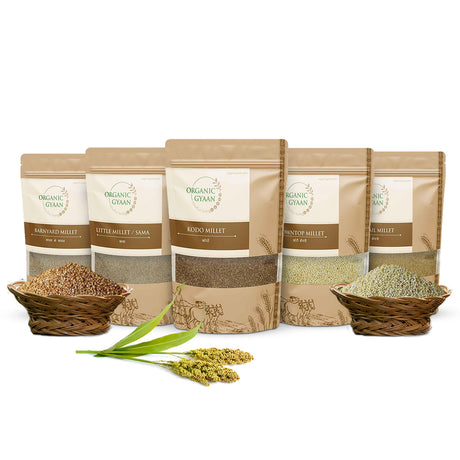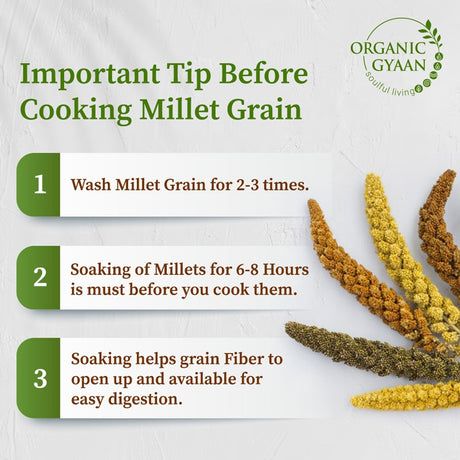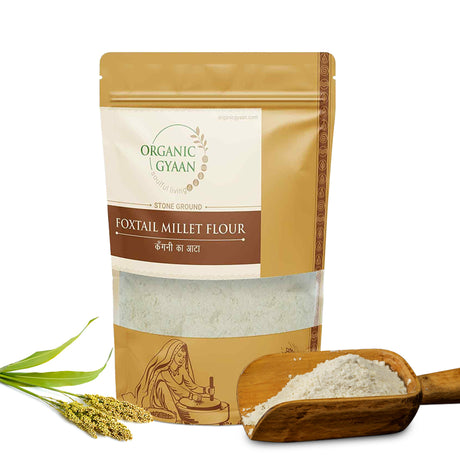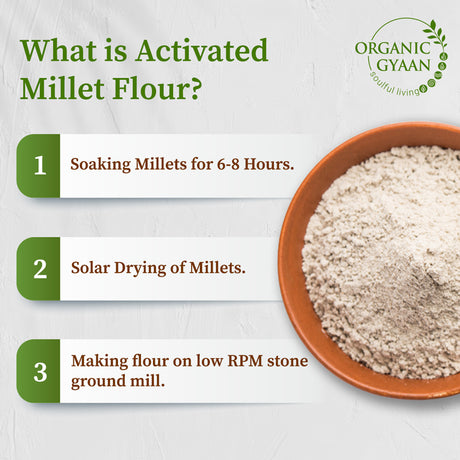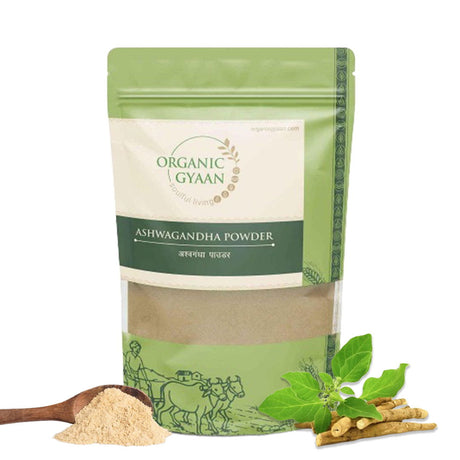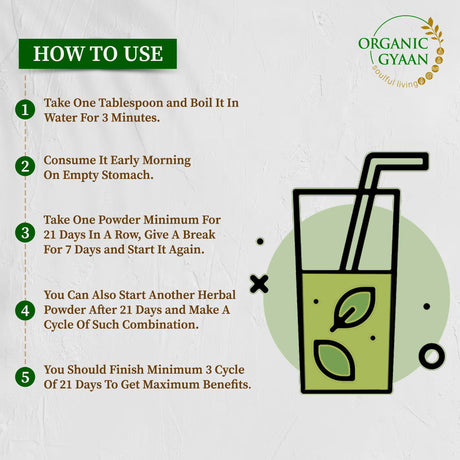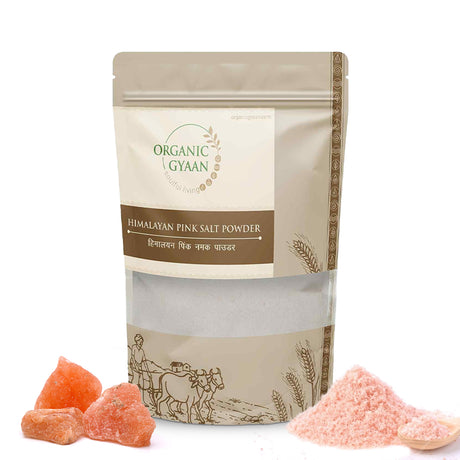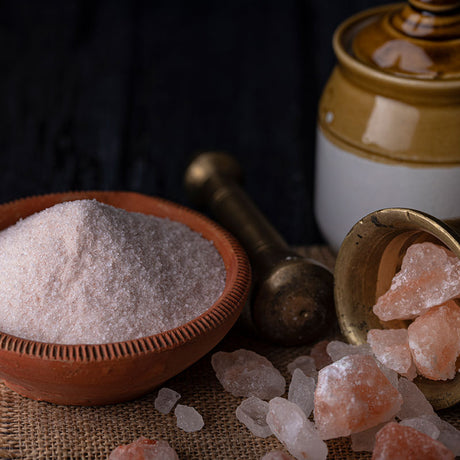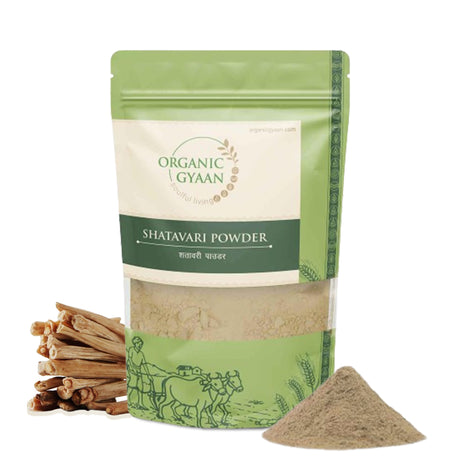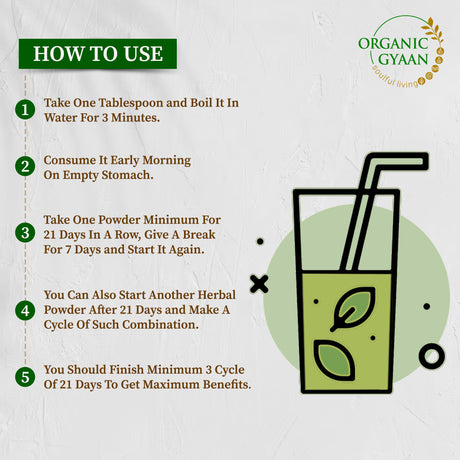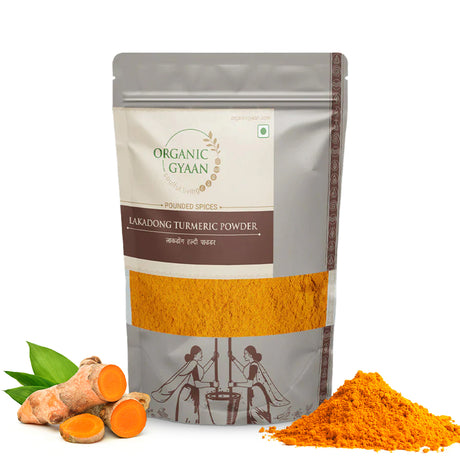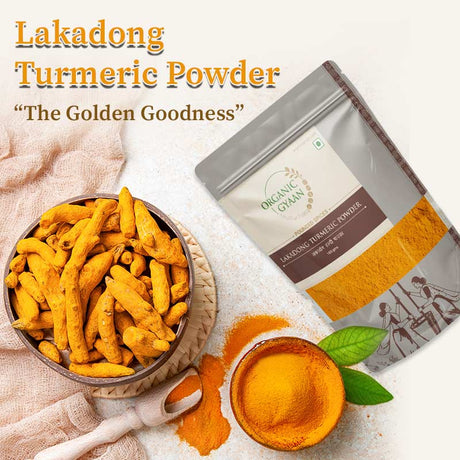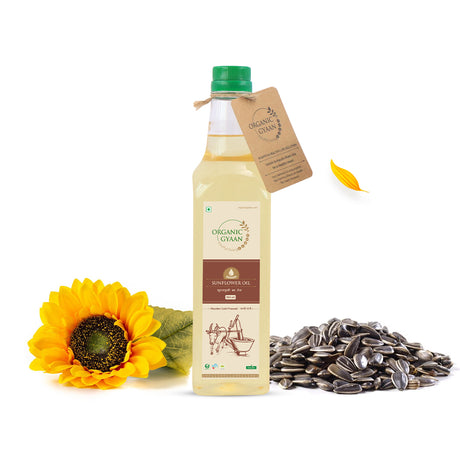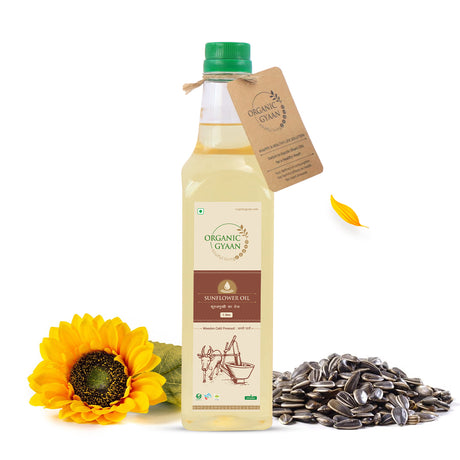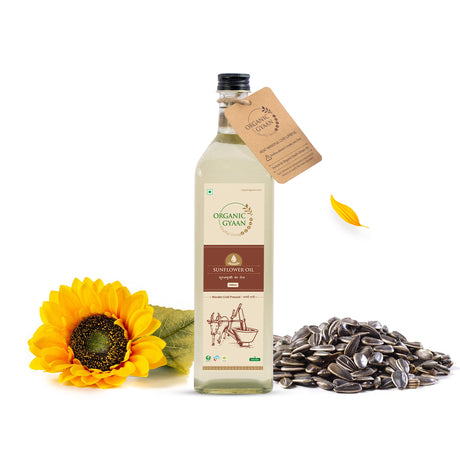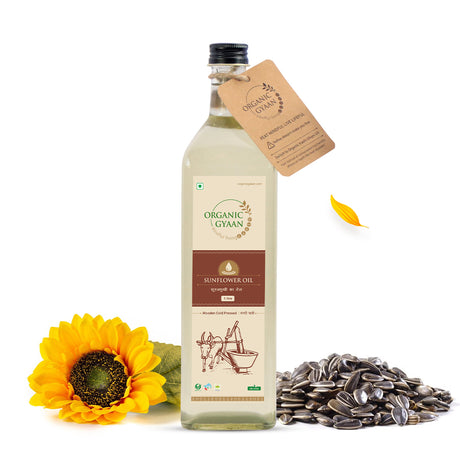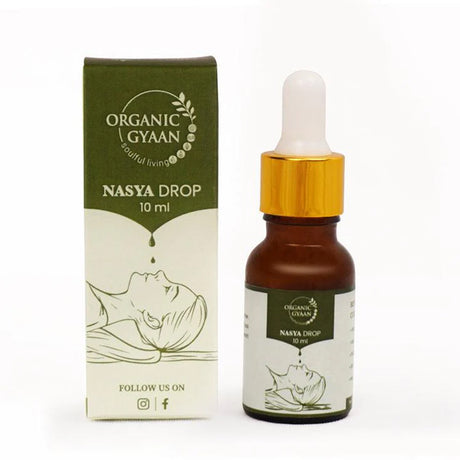आज हम ग्लूटेन-सचेत दुनिया में रहते हैं, इसलिए अनाज की हमारी किराने की सूची में काफी बदलाव आया है। क्विनोआ और ऐमारैंथ जैसे उच्च प्रोटीन वाले अनाज से लेकर ब्राउन राइस और बाजरा जैसे पारंपरिक ग्लूटेन-मुक्त अनाज तक, हमारे विकल्प उतने ही विविध हैं जितने कि वे स्वादिष्ट हैं। आज, हम खोज की एक पाक यात्रा पर निकल रहे हैं, आपको अनाज की एक शानदार सूची से परिचित करा रहे हैं जो न केवल ग्लूटेन-मुक्त हैं बल्कि पोषण संबंधी लाभों का खजाना भी हैं।"
ग्लूटेन क्या है और ग्लूटेन मुक्त आहार क्यों अपनाना चाहिए?
ग्लूटेन ग्लियाडिन और ग्लूटेनिन सहित प्रोटीन का एक जटिल मिश्रण है जो गेहूं, जौ और राई जैसे अनाज में पाया जाता है। हालांकि यह अधिकांश लोगों के लिए हानिकारक नहीं है, लेकिन कुछ व्यक्तियों को ग्लूटेन-मुक्त आहार की आवश्यकता होती है। सीलिएक रोग वाले लोगों को छोटी आंत में ऑटोइम्यून प्रतिक्रियाओं को रोकने के लिए ग्लूटेन से बचना चाहिए। गैर-सीलिएक ग्लूटेन संवेदनशीलता वाले अन्य लोगों को असुविधा का प्रबंधन करने के लिए ग्लूटेन-मुक्त आहार से लाभ हो सकता है। गेहूं से एलर्जी वाले लोगों को भी एलर्जी प्रतिक्रियाओं को रोकने के लिए ग्लूटेन से बचना चाहिए। ग्लूटेन-मुक्त आहार आम तौर पर उन लोगों के लिए अनावश्यक है जिनके पास ये स्थितियां नहीं हैं, हालांकि, कुछ व्यक्ति अन्य कारणों से ग्लूटेन-मुक्त रहना चुनते हैं, जैसे कथित स्वास्थ्य लाभ, वजन प्रबंधन, या व्यापक आहार दृष्टिकोण के हिस्से के रूप में।
ग्लूटेन-मुक्त साबुत अनाज की सूची
आइए उन अनाजों की सूची देखें जिन्हें ग्लूटेन-मुक्त माना जाता है, यह विविध रेंज आपको पौष्टिक और विविध आहार का आनंद लेने की अनुमति देती है।
1. क्विनोआ
हमारी सूची में सबसे पहले स्थान पर एक सुपर-अनाज, एक ग्लूटेन-मुक्त हीरो, पोषण का पावरहाउस - क्विनोआ है।
क्विनोआ उच्च प्रोटीन वाले अनाजों में से एक है, जिसमें सभी नौ आवश्यक अमीनो एसिड होते हैं - जो कि वनस्पति जगत में दुर्लभ है! फाइबर, आयरन, मैग्नीशियम और मैंगनीज से भरपूर, यह पोषण का खजाना है।
यह स्टर-फ्राई और सलाद जैसे व्यंजनों में अन्य अनाजों का एक उत्कृष्ट विकल्प है, तथा अखरोट जैसा स्वाद और स्वादिष्ट कुरकुरापन प्रदान करता है।
2. ब्राउन चावल
इसके बाद, हमारे पास एक ऐसा अनाज है जिसके बारे में आप शायद पहले से ही अच्छी तरह से जानते होंगे- ब्राउन राइस। यह पौष्टिक, पौष्टिक अनाज सफ़ेद चावल का कम संसाधित संस्करण है, इसकी चोकर परत और अंकुर बरकरार रहते हैं, जिसका मतलब है कि आपके लिए ज़्यादा पोषक तत्व।
ब्राउन राइस मैंगनीज, सेलेनियम और एंटीऑक्सीडेंट का एक बेहतरीन स्रोत है। इसमें फाइबर भी भरपूर मात्रा में होता है, जो पाचन के लिए बहुत अच्छा होता है और आपको लंबे समय तक भरा हुआ महसूस कराता है।
इसका हल्का स्वाद और चबाने योग्य बनावट इसे लगभग किसी भी भोजन में शामिल करना आसान बनाती है, चाहे वह स्टर-फ्राई हो या सलाद, सूप और यहां तक कि मिठाई भी!
3. बाजरा
आइए अब हम अपना ध्यान एक सुपर अनाज, बाजरा पर केंद्रित करें। बाजरे का पोषण संबंधी प्रोफाइल प्रभावशाली है। इनमें प्रोटीन, फाइबर और एंटीऑक्सीडेंट भरपूर मात्रा में होते हैं, और इनमें मैग्नीशियम, फॉस्फोरस, आयरन और पोटैशियम जैसे खनिजों की पर्याप्त मात्रा होती है। इनका ग्लाइसेमिक इंडेक्स भी कम होता है, जो इन्हें ब्लड शुगर लेवल पर नज़र रखने वालों के लिए एक अच्छा विकल्प बनाता है।
क्या आपने कभी सकारात्मक और तटस्थ बाजरा के बारे में सुना है!
सकारात्मक बाजरा उन बाजरों को कहा जाता है जो पोषण की दृष्टि से लाभकारी होते हैं और अपने स्वास्थ्य लाभों के कारण लोकप्रिय हुए हैं। सकारात्मक बाजरों के कुछ उदाहरणों में शामिल हैं:
-
फॉक्सटेल बाजरा
-
बार्नयार्ड बाजरा
-
कोदो बाजरा
-
छोटा बाजरा
-
ब्राउनटॉप बाजरा
तटस्थ बाजरा वे होते हैं जो अपने स्वास्थ्य लाभों के लिए भले ही उतने प्रसिद्ध न हों, लेकिन फिर भी पौष्टिक होते हैं और संतुलित आहार का हिस्सा हो सकते हैं। तटस्थ बाजरा के कुछ उदाहरणों में शामिल हैं:
-
बाजरा
-
रागी
-
प्रोसो मिलेट
-
ग्रेट मिलेट
-
देसी मक्का
बाजरे को पकाना चावल की तरह ही आसान है, और इसका हल्का मीठा, मेवे जैसा स्वाद कई तरह के व्यंजनों के साथ अच्छी तरह से मेल खाता है। सलाद और सूप से लेकर बेक्ड सामान और नाश्ते के दलिया तक, आपके किचन में बाजरे के लिए जगह है!
4. ओट्स
अंत में, आइए उस अनाज के बारे में बात करते हैं जो संभवतः सालों से आपके नाश्ते का हिस्सा रहा है - ओट्स। ओट्स पोषण का एक पावरहाउस है, जो फाइबर से भरपूर है, विशेष रूप से बीटा-ग्लूकेन नामक एक प्रकार, जो कोलेस्ट्रॉल कम करने वाले प्रभावों के लिए जाना जाता है।
वे विटामिन, खनिज और एंटीऑक्सीडेंट का भी एक बेहतरीन स्रोत हैं। और यह न भूलें कि वे फलों और नट्स से लेकर शहद और दालचीनी तक, कई तरह के टॉपिंग के लिए एकदम सही कैनवास हैं!
5. कुट्टू
आगे बढ़ते हुए, हम बकव्हीट पर आते हैं। और नहीं, इसके भ्रामक नाम के बावजूद, बकव्हीट का गेहूं से कोई संबंध नहीं है। यह पोषक तत्वों से भरपूर है - फाइबर में उच्च, और एंटीऑक्सीडेंट और मैंगनीज, मैग्नीशियम और तांबे जैसे खनिजों में समृद्ध है। इसकी उच्च प्रोटीन सामग्री और यह तथ्य कि यह ग्लूटेन-मुक्त है, इसे कई लोगों के लिए एक बढ़िया विकल्प बनाता है।
बकव्हीट के स्वादिष्ट, मिट्टी के स्वाद को न भूलें जो किसी भी व्यंजन में गहराई जोड़ता है। बकव्हीट के दानों का उपयोग सलाद, सूप में किया जा सकता है, या पैनकेक या नूडल्स बनाने के लिए आटे में पीसकर बनाया जा सकता है (क्या आपने कभी सोबा नूडल्स के बारे में सुना है? हाँ, यह बकव्हीट है!)
6. अमरंथ
ऐमारैंथ , ग्रीक में 'कभी न मुरझाने वाला' अनाज है, लेकिन अक्सर पूछा जाने वाला सवाल है कि "क्या ऐमारैंथ ग्लूटेन मुक्त है?" प्रोटीन और फाइबर से भरपूर यह अनाज ग्लूटेन मुक्त है, इसमें मैंगनीज, मैग्नीशियम, फास्फोरस और आयरन जैसे सूक्ष्म पोषक तत्व भी होते हैं।
अमरंथ को सबसे अलग बनाने वाली बात है इसमें मौजूद लाइसिन, एक ज़रूरी एमिनो एसिड जो ज़्यादातर अनाजों में नहीं होता। लाइसिन ऊतक वृद्धि और मरम्मत के लिए ज़रूरी है, जो अमरंथ को किसी भी आहार में शामिल करने के लिए एक बेहतरीन विकल्प बनाता है।
इसका मिर्ची जैसा स्वाद इसे विभिन्न व्यंजनों के साथ एकदम उपयुक्त बनाता है, नाश्ते के दलिया से लेकर रात के भोजन के स्टर-फ्राई तक, और यहां तक कि नाश्ते के रूप में भी!
7. टेफ़
अंत में, लेकिन निश्चित रूप से सबसे महत्वपूर्ण, हमारे पास टेफ़ है। इथियोपिया से उत्पन्न, यह छोटा अनाज हज़ारों सालों से आहार का मुख्य हिस्सा रहा है। हालाँकि, इसके आकार से आपको धोखा नहीं खाना चाहिए। टेफ़ पोषण से भरपूर है, जो प्रोटीन, फाइबर और आयरन, कैल्शियम और मैंगनीज़ जैसे खनिजों से भरपूर है।
टेफ़ का हल्का, पौष्टिक और थोड़ा मीठा स्वाद कई तरह के व्यंजनों में एक स्वादिष्ट अतिरिक्त है। इसे साइड डिश के रूप में पकाया जा सकता है, सूप और स्टू में डाला जा सकता है, या आटे में पीसकर बेकिंग में इस्तेमाल किया जा सकता है। यह पारंपरिक इथियोपियाई फ्लैटब्रेड, इनजेरा में भी मुख्य घटक है।
ग्लूटेन-मुक्त अनाज के स्वास्थ्य लाभ
इन आकर्षक ग्लूटेन-मुक्त अनाजों से आपका परिचय कराने के बाद, अब समय है कि आप इस बात पर गहराई से विचार करें कि इन्हें आपके आहार का हिस्सा क्यों होना चाहिए।
1. ग्लूटेन असहिष्णुता वाले लोगों के लिए फायदेमंद
-
सीलिएक रोग या गैर-सीलिएक ग्लूटेन संवेदनशीलता जैसी स्थितियों वाले व्यक्तियों के लिए, ये अनाज प्रतिकूल स्वास्थ्य प्रभावों का अनुभव किए बिना विभिन्न प्रकार के व्यंजनों का आनंद लेने का अवसर प्रदान करते हैं।
-
ग्लूटेन-मुक्त अनाज का सेवन करने से आंतों की परत में सूजन और क्षति से बचने में मदद मिल सकती है, जो ग्लूटेन असहिष्णुता वाले लोगों में ग्लूटेन का सेवन करने पर होने वाली आम समस्या है।
2. हृदय स्वास्थ्य का समर्थन करें
-
कुछ ग्लूटेन-मुक्त अनाज, जैसे ओट्स और ब्राउन राइस, हृदय के लिए अनुकूल गुण रखते हैं।
-
ये अनाज खराब एलडीएल कोलेस्ट्रॉल के स्तर को कम करने और अच्छे एचडीएल कोलेस्ट्रॉल के स्तर को बढ़ाने में मदद करते हैं, जिससे हृदय रोग का खतरा कम हो जाता है।
3. पाचन स्वास्थ्य को बढ़ावा दें
- कुछ ग्लूटेन-मुक्त अनाज, जैसे कि बाजरा और ऐमारैंथ, प्रीबायोटिक फाइबर प्रदान करते हैं जो लाभकारी आंत बैक्टीरिया को पोषण देते हैं, तथा स्वस्थ आंत वातावरण को बढ़ावा देते हैं।
4. स्थिर ऊर्जा स्तर को बढ़ावा दें
-
ग्लूटेन-मुक्त अनाज जटिल कार्बोहाइड्रेट से भरपूर होते हैं, जो धीरे-धीरे पचने के कारण निरंतर ऊर्जा प्रदान करते हैं।
-
ऊर्जा का यह धीमा उत्सर्जन रक्त शर्करा के स्तर को स्थिर बनाए रखने में मदद करता है तथा ऊर्जा में उतार-चढ़ाव को रोकता है।
5. वजन प्रबंधन
-
इन अनाजों में मौजूद उच्च फाइबर सामग्री तृप्ति को बढ़ावा देती है, जिससे अधिक खाने की संभावना कम हो जाती है।
-
यह, उनके पोषक तत्व-घनत्व और कम कैलोरी गिनती के साथ मिलकर, प्रभावी वजन प्रबंधन में योगदान कर सकता है।
ग्लूटेन-मुक्त अनाज पकाने के लिए सुझाव
1. खाना पकाने का अनुपात और समय
प्रत्येक अनाज का अपना अलग-अलग पकाने का अनुपात और समय होता है। उदाहरण के लिए, क्विनोआ में 2:1 पानी-अनाज अनुपात का उपयोग किया जाता है और यह लगभग 15 मिनट में पक जाता है, जबकि ब्राउन चावल को अधिक पानी और समय की आवश्यकता होती है।
2. बेहतर पोषण के लिए भिगोना
भूरे चावल और कुट्टू जैसे अनाज को पकाने से पहले भिगोने से लाभ होता है, जिससे फाइटिक एसिड का स्तर कम करने और खनिज अवशोषण में सुधार करने में मदद मिलती है।
आमतौर पर इन अनाजों को पकाने से पहले कुछ घंटों या रात भर के लिए भिगोया जाता है।
3. स्वाद बढ़ाने वाले
अनाज को पानी के बजाय सब्जी के शोरबे में पकाकर या जड़ी-बूटियाँ और मसाले डालकर उसका स्वाद बढ़ाएँ।
रोमांचक ग्लूटेन-मुक्त अनाज व्यंजन
बाजरा खिचड़ी रेसिपी
सामग्री:
-
1 कप मिश्रित बाजरा (फॉक्सटेल बाजरा, बार्नयार्ड बाजरा, छोटा बाजरा, कोदो बाजरा, या अपनी पसंद का कोई भी बाजरा)
-
1/2 कप पीली मूंग दाल
-
2 कप मिश्रित सब्जियाँ (गाजर, मटर, बीन्स, आदि), कटी हुई
-
1 चम्मच कसा हुआ अदरक
-
1 हरी मिर्च, बारीक कटी हुई (अपनी पसंद के अनुसार मसाला समायोजित करें)
-
1/2 चम्मच हल्दी पाउडर
-
1/2 चम्मच जीरा
-
1/2 चम्मच सरसों के बीज
-
1 बड़ा चम्मच ऑर्गेनिक वुडेन कोल्ड-प्रेस्ड नारियल तेल
-
एक चुटकी हींग
-
4 कप पानी
-
नमक स्वाद अनुसार
-
ताजा धनिया पत्ता, कटा हुआ (सजावट के लिए)
निर्देश:
1. मिश्रित बाजरा और मूंग दाल को ठंडे पानी में तब तक धोएँ जब तक पानी साफ न हो जाए। उन्हें लगभग 30 मिनट तक पानी में भिगोएँ। पानी को छानकर अलग रख दें।
2. एक मिट्टी के बर्तन में, मध्यम आंच पर कार्बनिक लकड़ी के ठंडे दबाए गए नारियल के तेल को गर्म करें।
3. इसमें जीरा और राई डालें और इन्हें तड़कने दें।
4. स्वाद के लिए एक चुटकी हींग डालें।
5. अब इसमें कद्दूकस किया हुआ अदरक और कटी हुई हरी मिर्च डालें और एक मिनट तक भूनें जब तक कि कच्ची महक गायब न हो जाए।
6. मिश्रित सब्जियों को बर्तन में डालें और कुछ मिनट तक भूनें जब तक कि वे थोड़ा पक न जाएं।
7. भिगोए हुए बाजरा और मूंग दाल को बर्तन में डालकर अच्छी तरह मिला लें।
8. हल्दी पाउडर और स्वादानुसार नमक डालें और सभी चीजों को अच्छे से मिला लें।
9. बर्तन में 4 कप पानी डालें और उसे अच्छी तरह हिलाएं।
10. मिट्टी के बर्तन को ढक्कन से ढक दें और इसे तब तक पकने दें जब तक बाजरा और दाल पूरी तरह से पक कर नरम न हो जाएँ (लगभग 20-25 मिनट)। बीच-बीच में हिलाते रहें और ज़रूरत पड़ने पर और पानी डालें।
11. जब खिचड़ी पक जाए तो उसे कुछ मिनट के लिए ऐसे ही रहने दें और फिर बर्तन को आंच से उतार लें।
12. बाजरे की खिचड़ी को ताजा कटे धनिये से सजाएं।
13. इसे सादे दही या A2 घी के साथ गरमागरम परोसें।
स्वादिष्ट और पौष्टिक बाजरा खिचड़ी का आनंद लें।
अमरनाथ दलिया रेसिपी
सामग्री:
-
1 कप ऐमारैंथ
-
2 1/2 कप पानी
-
1 कप A2 दूध
-
1/2 चम्मच पिसी दालचीनी
-
1 बड़ा चम्मच जैविक शहद (स्वादानुसार समायोजित करें)
-
1 बड़ा सेब, छिला और कटा हुआ
-
1 बड़ा चम्मच चिया बीज (वैकल्पिक)
-
नमक की चुटकी
निर्देश:
1. एक महीन जालीदार छलनी का उपयोग करके ठंडे पानी के नीचे ऐमारैंथ को धो लें।
2. एक मध्यम आकार के मिट्टी के बर्तन में, धुले हुए ऐमारैंथ और 2 1/2 कप पानी को मिलाएँ। इसे उबाल लें, फिर आँच को कम कर दें, ढक दें, और इसे लगभग 20 मिनट तक या ऐमारैंथ के नरम होने और पानी के सोखने तक उबलने दें।
3. खाना पकाने के आखिरी कुछ मिनटों में बादाम का दूध, पिसी दालचीनी, ऑर्गेनिक शहद और एक चुटकी नमक डालें। अच्छी तरह मिलाएँ और 2-3 मिनट तक धीमी आँच पर पकने दें।
4. दलिया को आंच से उतार लें और कुछ मिनट के लिए ऐसे ही रहने दें।
5. एक अलग मिट्टी के बर्तन में, कटे हुए सेब को थोड़े से मक्खन या तेल के साथ मध्यम आंच पर तब तक भूनें जब तक वह थोड़ा नरम न हो जाए।
6. गर्म ऐमारैंथ दलिया को कटोरे में परोसें, ऊपर से भूने हुए सेब, कटे हुए मेवे और चिया बीज (यदि उपयोग कर रहे हों) डालें।
7. यदि आप चाहें तो अतिरिक्त मिठास के लिए ऊपर से अतिरिक्त जैविक शहद भी डाल सकते हैं।
अपने आरामदायक और पौष्टिक ऐमारैंथ दलिया का आनंद लें!
निष्कर्ष
ग्लूटेन-मुक्त होने का मतलब यह नहीं है कि आपको अनाज को अलविदा कहना होगा। वास्तव में, यह बिल्कुल इसके विपरीत है। जैसा कि हमने देखा है, ग्लूटेन-मुक्त अनाज की दुनिया समृद्ध और विविधतापूर्ण है, जो हर किसी के लिए कुछ न कुछ प्रदान करती है। उच्च प्रोटीन वाले अनाज, साबुत अनाज और ग्लूटेन-मुक्त कार्बोहाइड्रेट की एक विस्तृत श्रृंखला आपके लिए आसानी से उपलब्ध है जिसे आप खोज सकते हैं और आनंद ले सकते हैं।
तो, क्यों न इसे ग्लूटेन-मुक्त पाककला के रोमांच को अपनाने के लिए एक निमंत्रण के रूप में लिया जाए? नए व्यंजनों को आजमाएँ, और विभिन्न प्रकार के अनाजों के साथ प्रयोग करें, लेकिन सुनिश्चित करें कि आप केवल जैविक अनाज ही खरीदें, आप इसके लिए हमारे ऑनलाइन स्टोर पर जा सकते हैं और इन शानदार अनाजों की विविधता और बहुमुखी प्रतिभा का आनंद ले सकते हैं। खाने का आनंद लें!


